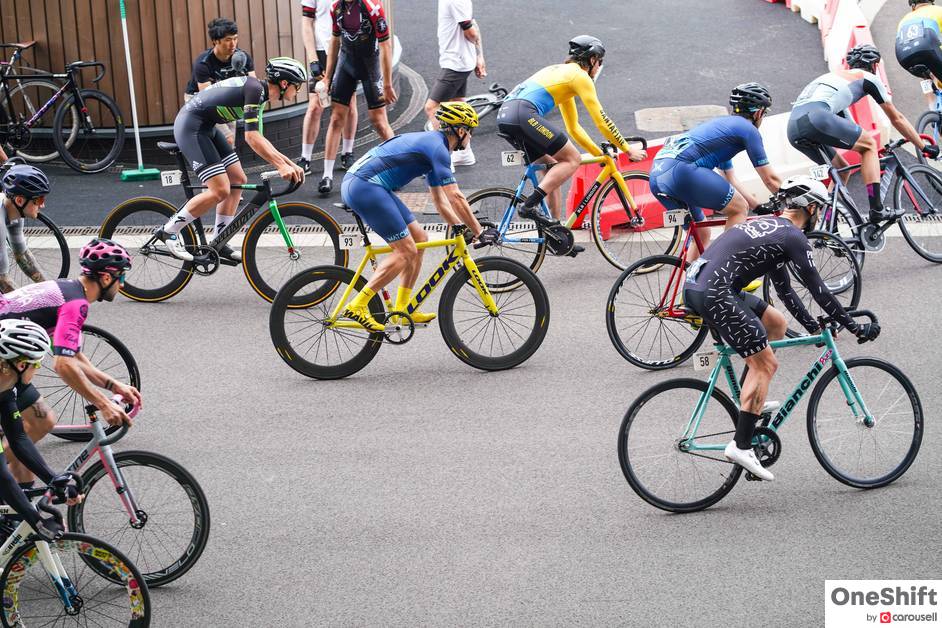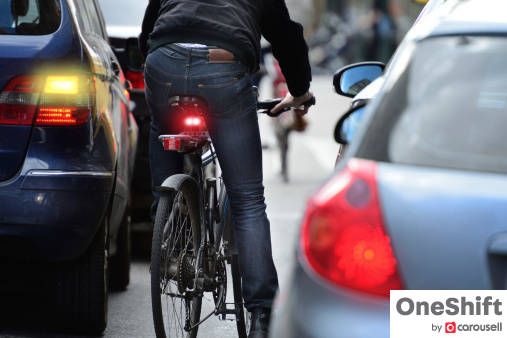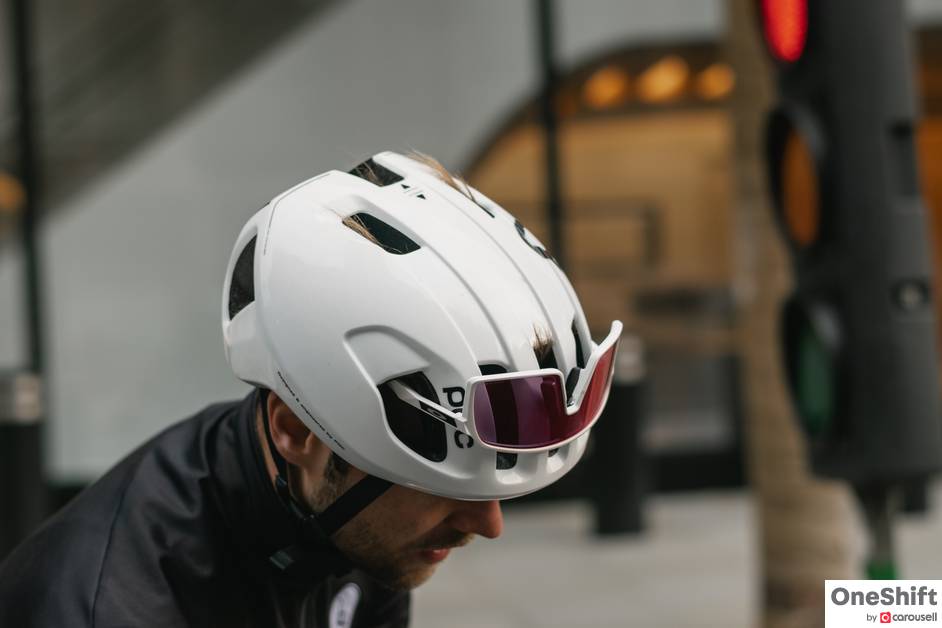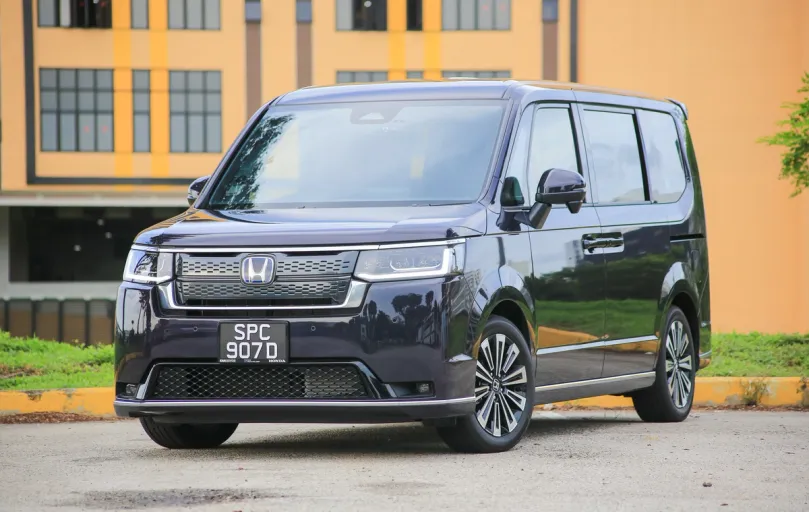Is This The Best We Can Do? - On-Road Cycling Rules Reviewed by Active Mobility Advisory Panel
On Friday 1 October 2021, the Active Mobility Advisory Panel (AMAP) submitted to the Ministry of Transport (MOT) several recommendations to review the rules for on-road cycling. While the review was well-timed, and did produce some new guidelines that would be beneficial to both the on-road cycling and driving community, there is still major ground to cover, with both AMAP and MOT still refusing to take a stand on grey and contested segments of the topic, with gaping loopholes still existing in the justifications surrounding on-road cycling.

On Friday 1 October 2021, the Active Mobility Advisory Panel (AMAP) submitted to the Ministry of Transport (MOT) several recommendations to review the rules for on-road cycling. While the review was well-timed, and did produce some new guidelines that would be beneficial to both the on-road cycling and driving community, there is still major ground to cover, with both AMAP and MOT still refusing to take a stand on grey and contested segments of the topic, with gaping loopholes still existing in the justifications surrounding on-road cycling. While this fence-sitting stance is perhaps a measure to “keep the peace”, I am of the opinion that not taking a stand will lead to further problems down the line. After scrutinising the recommendations made by AMAP, here are some talking points and takeaways.

Under the AMAP’s recommendations, cyclists would no longer be allowed to ride in large, uncontrolled pelotons which would present the same kind of obstruction that a large slow moving vehicle would. As such, groups of riders will need to keep to groups of 5 in a single file, or 10 when riding abreast, while leaving a gap of 30m between different groups of riders - which will facilitate vehicles trying to filter into the left turning lane, between the groups of cyclists. This is a great example of a practical new rule that will no doubt increase safety for cyclists, but also help to alleviate some of the frustrations faced by the driving community.
Perhaps the key point of the review, the AMAP has recommended that bicycle registration and licensing of cyclists not be imposed at this point, as it would result in a disproportionate impact on more vulnerable groups of cyclists, such as seniors and individuals who rely on bicycles for work and short commutes. The AMAP also added that there is no evidence supporting the notion that such registration and licensing structures would deter errant cycling and enhance road safety. I thought this decision was a rather well calibrated one and showed a depth in consideration by the panel.
I like how the AMAP cited clear objectives of deterring errant cycling and enhancing road safety, and how bicycle registration was unlikely to do either - I agree completely, but then how about other measures that might raise some barriers to cycling, but would definitely deter errant cycling and enhance road safety? I am of the opinion that all road users should undergo theory testing and be of a minimum age. Before you start throwing stones at me, hear me out - there are some things you will need to realise.
Since the beginning, all motorists who utilise the road have had to undergo theory testing as a prerequisite to practical testing and ultimately receiving their license. The minimum age for all this is 18 years of age, regardless of the type of vehicle you are operating. You will notice that the 18 year old minimum age does discriminate between the type of vehicle you operate, which also means that the 18 year old minimum age is not a benchmark of technical ability in operating a vehicle, but rather, a benchmark of maturity - a maturity of mind, to conduct oneself properly on the road, in relation to one’s own safety, and the safety of others. So one must begin to wonder, “In what world is it alright that there is no minimum age for on-road cyclists?” How is this even debatable? It simply does not make sense that a 14 year old, whom the government has already indirectly deemed too immature to be on the road (through its 18 year old minimum age for riding and driving), is now suddenly allowed to coexist with cars, motorcyclists, buses, and all sorts of heavy vehicles on the road.
In the same vein, the highway code and theory testing for motorists covers topics relating to how they should behave on the road, and how they should behave in relation to other motorists on the road - It doesn’t tell you how to operate a vehicle. What does that tell us? Considering the nature of the information covered in the highway code, you would think that perhaps, on-road cyclists, being the most vulnerable, should be the very first people who should be sitting for theory testing. - But no, they are instead exempted from it. Strange isn’t it? Troublingly, new sections governing the way motorists should behave around on-road cyclists have actually been added to the highway code for cars, in effect mandating the possession of this knowledge among motorists. This essentially places the burden and accountability of road safety onto the shoulders of motorists, while the post-covid surge of on-road joyriders that come in all shapes, sizes, and experience levels, continue to raise tensions among the tax-paying road users.
It's a frustrating realisation, but these cyclists may or may not even know how and in what ways they are causing anguish to the driving community. Hell, they may not even know what they are doing wrong, or if they are doing anything wrong, because no one even knows if any of them have ever read the highway code section for cyclists (yes there is actually a section for cyclists - you can read it here) because no on-road cyclist has ever been tested for it. Yikes! Why like that? I thought we loved standardised testing in Singapore.

One might argue that although there isn’t currently a theory test in place for on-road cyclists, there are still laws in place against errant cycling. The highway code section for cyclists still exists, and therefore cyclists are still responsible for their actions. True - Except, enforcement for cycling offences are pretty much non-existent in the eyes of the public. A couple of enforcement operations carried out sporadically here and there, heavy publicity about the government’s “efforts”, and paltry $75 fines handed out to on-road cyclists flouting rules as serious as beating red lights. To make matters worse, I think many of us will think back to the 2018 Pasir Ris incident where the cyclist harassed a lorry on the road, punched out the lorry’s side mirror and got sideswiped.

A working-class uncle just trying to go about his day’s work is harassed into an altercation with a joy-riding cyclist on a busy road in an industrial-esque area. Uncle gets 7 weeks in jail, a $500 fine, and a 2 year driving ban. Cyclist gets a fine of $2,800. I won’t debate the innocence of the lorry driving uncle - for he was also rash to have hit the cyclist, and should be punished. However, the disparity of the sentences meted out reeks of injustice and sends the message that a person’s civil liberties (cycling for leisure) are far more important than a person’s livelihood (uncle was just going about his day doing his work), and that perhaps, cyclists are so protected and “vulnerable” that they are above the law. Here’s the thing though, a cyclist’s vulnerability is a self-inflicted one, a conscious choice to put their own physical self onto a road with other motorists. One might argue that such a vulnerability should not be considered as one, and surely, should not come at the expense of, and infringe upon a motorist’s right to a safe driving environment. Think about it this way - If you choose to participate in a football game without wearing shin pads, should the other players have to accommodate your situation by not tackling you, and be held responsible if you bruise your shin? Obviously not right?

Subjective as it may be, I think that penalties for cyclists are currently way too relaxed, if even properly or regularly enforced. In this 2021 Straits Times article, it mentions that cyclists who were caught during a traffic police operation were fined $75 for offences such as running the red light or riding against the flow of traffic. Is anyone convinced that a paltry $75 fine is supposed to adequately represent how seriously we take road safety? To put things into perspective, the fine for not returning your plates and trays at coffee shops and hawker centres is $300, and the fine for sleeping on an Nparks bench is $200 - more than double the fine of an errant cyclist running the red light or riding against traffic. Are we even surprised that on-road cyclists not only do not have any fear or respect of the rules, and are perhaps emboldened in the most entitled ways?

The 1.5m ruling was reiterated by the AMAP as an important guideline, even recommending its inclusion in driving test handbooks. As such, it appears that the minimum passing distance is here to stay, and there doesn’t seem to be much point debating it. However, it does feel like the rule was proposed and enforced by people who have never had to deal with on-road cyclists during peak hour on a busy road. There really isn’t a better way to say it - but it’s just not realistic. Hundreds of cars having to filter out to the right because of 1 slow moving cyclist on a busy road during peak hour - does that sound right to you? The rule might as well state that cyclists can have the entire lane to themselves (effectively a cycling lane), because effectively, based on current rules, a motorist really has no choice but to filter to the next lane in order to fulfil the 1.5m passing distance. The problem with implying this outcome rather than saying it point blank, is that people cannot reconcile how ridiculous the rule is, and are unable to make sense of nor take actions to exercise it.
I’m not saying that a minimum passing distance is not needed - I think it should exist because otherwise, everyone would be having a go at the nearest cyclist. However, perhaps these rules should also consider correlated factors. For example, would it be too unreasonable to say that the rules be adjusted to allow riders to cycle 2 abreast only on roads with 3 lanes or more, instead of the current 2 lanes? Additionally, I thought that it would be beneficial if there were some discernment between the different types of road cycling against travel timings. For example, a grabfood delivery rider should be allowed to ride during peak hour traffic, but is there really a need to allow leisure or recreational cyclists on the roads during peak hour? - I think not. Although the grabfood riders would still constitute an obstacle for a vehicle, I have found that I drivers are generally more understanding of an individual who is just trying to get through their work to support themselves and their families. The same empathy is not often extended to our spandex wearing friends - and why should it? Regardless of activity, at some point we are all subjected to timing limitations in consideration of the community around us. Condo tennis courts open at 7am and close at 10pm (why can’t we play at 2am if we so wish?). Public basketball courts and street soccer courts shut their lights at 9pm so that the noise does not bother the residents in the surrounding blocks. So why can’t our Tour de France wannabe riders be barred from riding during peak hour traffic? While currently not flouting the law in this regard - it’s evident that these individuals are inconsiderate individuals who get their way on a technicality, without any consideration for the social norms that govern people’s perceptions of what is acceptable and what is not. To me, this is a case of a civil liberty being taken too far.

When the results of the review were released, I instantaneously had the sneakiest feeling that the AMAP was not diversely represented, and therefore, not entirely credible. And so I checked - and I’ll leave you to decide for yourselves if the panel was well equipped to provide balanced and well rounded considerations surrounding the issues. There was representation from only 1 driving interest group, as opposed to the cycling community, who were represented by no less than 3 to 4 different people and their organisations. There was no traffic subject matter expert who could weigh in on things like how on-road cyclists can affect traffic flow during peak hour traffic. There was no insurance subject matter expert who could comment on this issue’s impact on third party liability insurance and car insurance in the future. There was also no legal representation who could comment on legal imbalances or loopholes surrounding the issue.
Credits:


Get the Best Price for your used car
from 500+ dealers in 24 hours

- Convenient and Hassle-Free
- Consumer Protection
Transparent Process
With No Obligation








